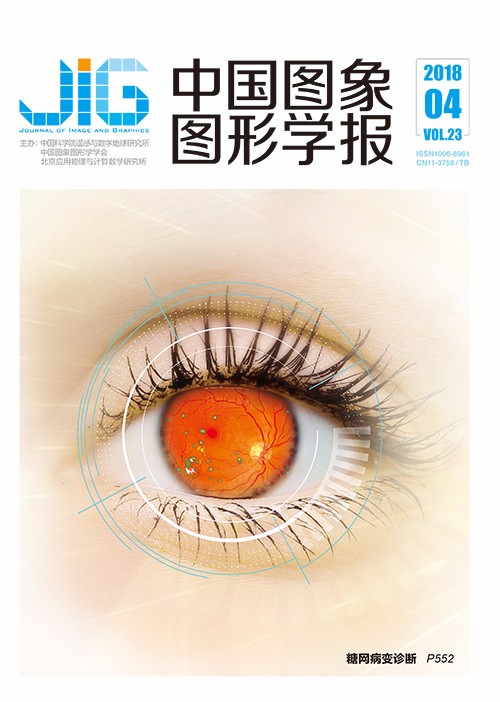
结合HSV空间的水面图像特征水岸线检测
摘 要
目的 水岸线可用于无人艇视觉导航、运动状态估计,是无人水面艇自主航行的重要参照特征。水岸线类似于水天线,但由于水波、反光、倒影等因素,内河水岸线检测的背景更复杂,难以采用现有水天线检测技术。通过分析水面图像在HSV空间的特征,发现陆地区域的饱和度值均高于天空和水面区域;在光照较暗时,色彩信息不能使用,亮度图像中的陆地区域相对其他区域较暗,但仍然存在水岸线轮廓特征。基于这一分析结果,提出结合HSV空间的水面图像特征水岸线检测方法。方法 首先将RGB图像经过高斯滤波后变换到HSV空间,依据权重进行HSV空间特征分量选取,接着进行像素点非线性增强;然后在增强的图像上进行区域分割,并将各个区域定义为基底图像;其次分析饱和度图像的行列特性,提取高饱和度的陆地区域,并将其定义为模板图像,将模板图像覆盖在各个基底图像上,按重叠区域面积比选取基底图像;最后通过边缘检测算子检测水岸线。结果 本文采集不同季节,不同光照强度的水面图像进行水岸线检测实验,实验结果表明本文算法可以在不同光照环境下准确检测出水岸线,且轮廓清晰完整,本文算法的实时性可达到1帧/s。结论 本文提出的结合HSV空间的水面图像特征水岸线检测方法,可以在不同的光照环境中有效地检测出轮廓清晰完整的水岸线,验证了水面图像分析的结论,本文算法可适用于无人艇视觉导航中。
关键词
Shoreline detection method by combining HSV spatial water image feature
Peng Mingyang, Wang Jianhua, Wen Xiangxin, Cong Xiaoyi(Shanghai Maritime University, Shanghai 201306, China) Abstract
Objective The application of unmanned surface vehicles in inland rivers has broad prospects, such as water quality monitoring and hydrographic surveying and mapping. However, the existing visual research on unmanned surface vehicles is mostly based on sea environment. When unmanned surface vehicles navigate autonomously, the shoreline of an inland river is equivalent to the skyline detected in the sea environment, which has great significance for visual navigation of unmanned surface vehicles. Shoreline can be used for image partition, finding a water surface area, obstacle avoidance navigation, and estimating the motion state of unmanned surface vehicles. Shoreline is an important reference for the autonomous navigation of unmanned surface vehicles. Although a shoreline is similar to a skyline, the background of a shoreline is more complex than that of a skyline due to the influence of water waves, reflected light, and inverted image. The existing skyline detection method is unsuitable for shoreline detection. Inspired by the color perception mechanism of the human visual system, we propose to detect shoreline based on hue, saturation, and value (HSV). Method We collect water surface images by using the camera of an unmanned surface vehicle and analyze the image features in the HSV color space. The saturation of a land area is higher than that of sky and water areas. When the light situation is dark, the hue information cannot be used. The land area in an image is darker than other areas, but the image can still be used for shoreline detection. On the basis of this analysis result, we propose a shoreline detection method by combining HSV spatial water image features. First, we transform an RGB image into an HSV color space after Gaussian filtering. The Gaussian model can effectively overcome the interference caused by a change in illumination and the disturbance of a water image. Components in the HSV color space are selected by the weight of the land area features, and the selected components are enhanced nonlinearly to improve their contrast. Second, we segment the enhanced image and define each region as a bottom image. Third, we analyze the features of rows and columns in the original saturation image and extract land areas with high saturation as template images. We cover each bottom image with the template image and select the bottom image by the overlap area ratio. After overlapping the selected bottom image, we obtain the final land area image. Finally, we obtain the absolute shoreline by using an edge detection operator and removing the overlapping line of the sky and land in the topside. Result Water surface images with different light intensities in different seasons are collected. When we select images during middays of spring and autumn, the detected shorelines are clear and complete. When we select images during afternoon, the backgrounds of the surface images are complex due to poor lighting, but we still can accurately detect shorelines. When we select reflection images of water surfaces to perform a comparative experiment, the proposed method can effectively remove the reflection interference of the water surfaces. When we select images of water surfaces during sunset, during which the light tends to be red, the proposed method is unaffected by the red light. When we select images of water surfaces with sun reflection, the proposed method can remove the sun reflection in the images. Therefore, we can conclude that the proposed method has strong anti-interference. The experimental results reveal that the method can accurately detect shorelines in different light environments and ensure that the contours of the shorelines are clear and complete. The real-time result of the method can reach 1 frame/s. Conclusion The proposed method can effectively detect shorelines in different light environments and ensure that their contours are clear and complete. The method can be applied for visual navigation of unmanned surface vehicles.
Keywords
|



 中国图象图形学报 │ 京ICP备05080539号-4 │ 本系统由
中国图象图形学报 │ 京ICP备05080539号-4 │ 本系统由